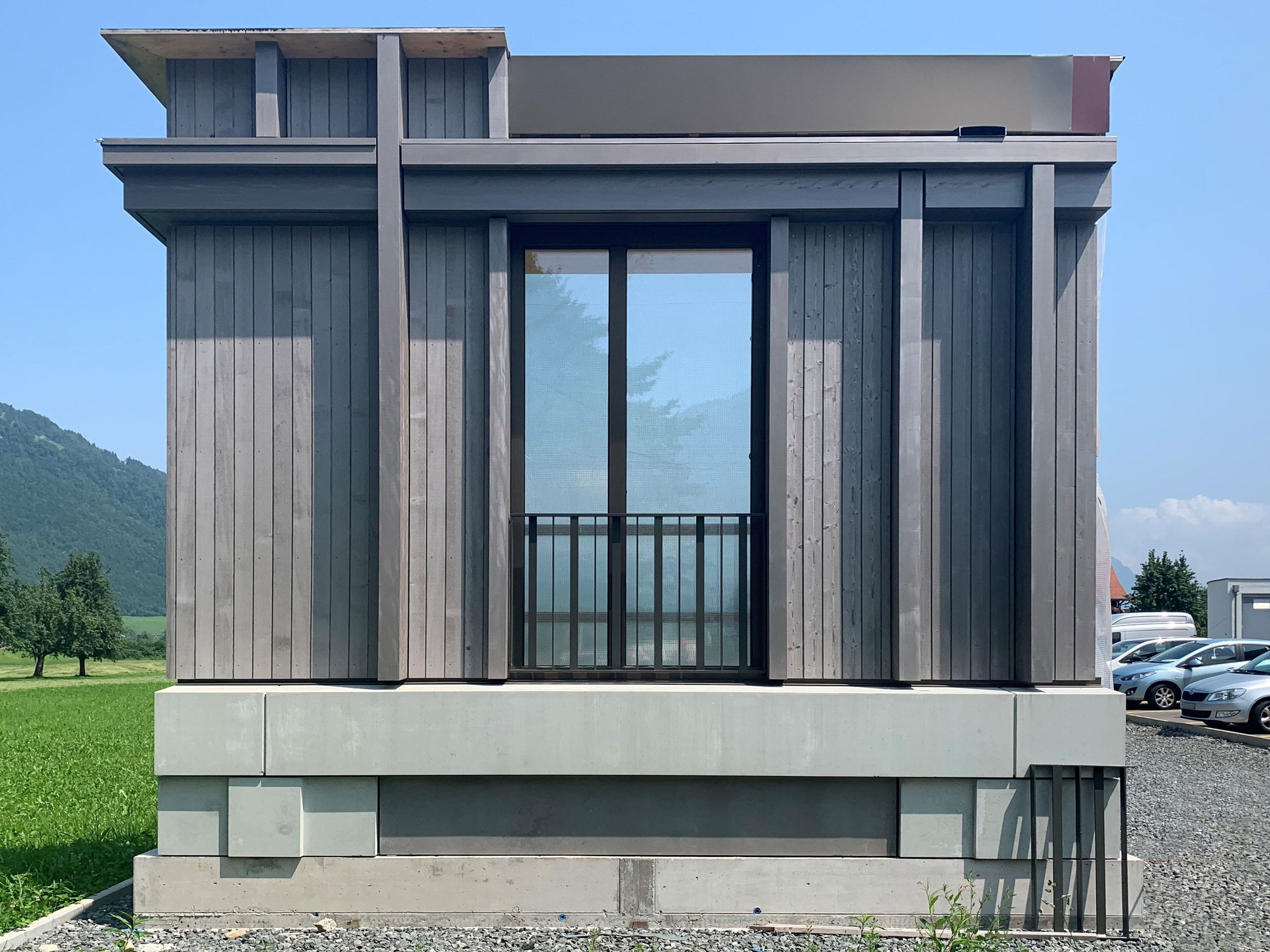
The wooden construction of the Mettenweg nursing home ties in with the local building tradition and high-quality craftsmanship. Constructive wood protection is part of this long tradition and an important reason why many wooden buildings still exist centuries later.
WHY CONSTRUCTIVE WOOD PROTECTION?
When building with wood, protection against moisture is an important aspect if the substance and properties of the material are to be preserved for a long time. If the wood moisture content is too high, fungi and microbes can destroy the material. Wood may get wet, but it must be able to dry out quickly. Similar to energetic measures, where passive measures form the basic framework of the energy concept, on which active measures can be built if necessary, for us the considerations for wood protection begin with the constructive protection options.
WOOD PROTECTION AT THE METTENWEG NURSING HOME
The entire ground floor made of in-situ concrete and prefabricated concrete elements forms the base for the wooden building above. In order for the wooden façade to dry well after rain and fog, good air circulation is necessary. The rear ventilation of 2 x 30 mm disses moisture from the façade formwork and any condensates of the wall construction, while water noses, the formation of joints and inclined surfaces prevent standing water and capillary penetration of moisture.
In the past, designs were often designed so that components could be replaced regularly. The slightly cantilevered sacrificial board as an alternative to a sheet metal cover on the bullet bar originates from this idea of interchangeability. It is exposed to direct weathering and wear is accepted within the next 15-20 years. The floor panels, which protect the façade cladding, do not suffer any damage.According to the principle of "as little as possible, as much as necessary", chemical wood protection by means of a pressure impregnation or impregnation coating is only applied to the heavily stressed sacrificial boards or the bullet bars on the front side.
The collection protection concept was developed in close cooperation with the timber construction engineering office holzprojekt, Holzbau Bucher AG and the impregnation plant Wilisau and put to the test in a mock-up.
More about the project